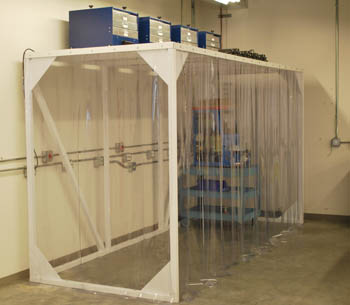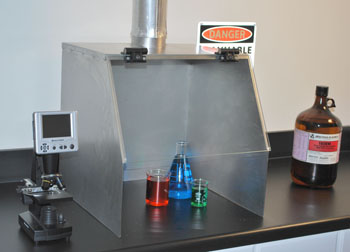Dairy Testing
Dairy products are foods based on milk. Yogurt, cheese, kefir, butter — and milk, of course — are important foodstuffs around the globe.
Regulatory agencies, food safety scientists, food technologists as well as dairy producers themselves may test dairy products using a variety of test chemicals.
Some testing is designed to determine the health status of the animals that produced the milk. Others help determine the freshness of the milk.
The fat-protein ratio can be determined via testing.
Fermented milk products such as cheese, yogurt and kefir may have components – various natural acids, glucose, enzymes — that must be in balance with one another in order to create the preferred taste of each product.
What chemicals are used in dairy testing?
A quick survey of dairy testing manuals and websites found mention of the chemicals in the table below as components of various testing methods.
| Chemical | Typical Safety Data Sheet (SDS) notations |
| sulphuric acid | Use only under a chemical fume hood. Ensure adequate ventilation. Probably carcinogenic to humans. May cause cancer by inhalation. |
| hydrochloric acid | Avoid breathing mist, vapors or spray. Respiratory irritation, coughing, ulceration of nose and throat. Industrial exposure to hydrochloric acid vapors and mists is listed as a known human carcinogen by IARC. |
| phenolphthalein | Use adequate ventilation to keep airborne concentrations low. Use only under a chemical fume hood |
| formalin | High vapor concentrations may cause respiratory tract irritation and central nervous system effects such as dizziness, drowsiness, nausea, vomiting, visual disturbances and unconsciousness. |
| sodium hydroxide | Use only under a chemical fume hood. Exposure guidelines, depending upon agency: 2 mg/m3 to 10 mg/m3. |
| ammonium hydroxide | Do not breathe dust/fume/gas/mist/vapors/spray. Ensure adequate ventilation. |
Continued frustration with safety data.
Safety Data Sheets (SDS) replaced Material Safety Data Sheets. Many of both types remain available online. Theoretically, the SDS should contain more comprehensive, relevant information on health and safety hazards but it does appear there is a lot of copy-and-paste-into-the-new-template. However, some SDSs now contain differing exposure limits proposed by several regulatory and industrial hygiene organizations. That should give you pause the next time you think you might be cavalier about a respiratory hazard. Err on the side of caution.
Custom hoods
We make custom hoods in all sizes

Steel-framed soft-sided walk-in ductless containment hood with four Model 400 air purification units, a custom design.

Stainless steel 18-inch wide exhaust hood, designed to customer’s specification.
YouTube: https://www.youtube.com/watch?v=2VVXt9UixVY
Sentry Air Blog: https://www.sentryair.com/blog/category/custom-fume-hood/
Give us a call
If you need to solve a problem with solvent odors, particulate, or VOCs, and the solution needs to fit in a specific location or accommodate specific instruments, give our applications specialists a call at 800.799.4609 or email sales@sentryair.com.
You can also reach them via the feedback form below
Resources
GUIDE TO INSPECTIONS OF DAIRY PRODUCT MANUFATURERS
http://www.fda.gov/ICECI/Inspections/InspectionGuides/ucm074974.htm
Food and Agriculture Organization of the United Nations
http://www.fao.org/agriculture/dairy-gateway/milk-and-milk-products/quality-and-testing/en/#.VvLzy-IrJYg
Dairy Foods Fact Booklet
http://dass.missouri.edu/aged/resources/dairy-foods-booklet.pdf

 Made in the USA
Made in the USA